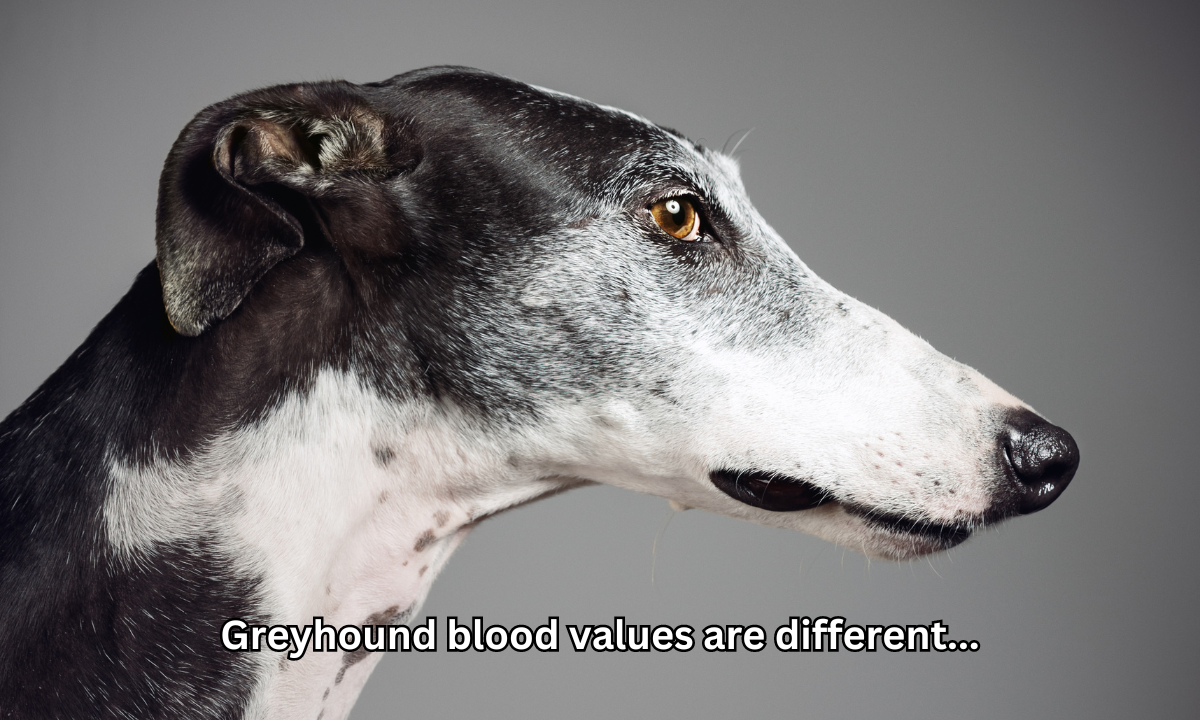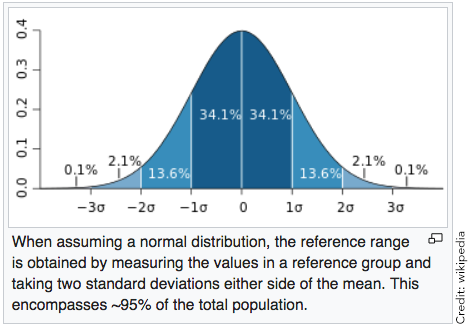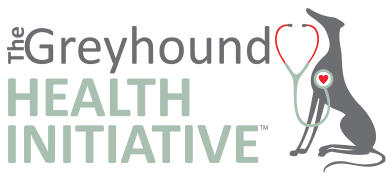Greyhounds really are not like other dogs

One way in particular that greyhounds are different from all other dogs is in their blood values (reference intervals) for several key lab values. In medical fields, a reference interval is the range of values for a physiological measurement in the average healthy, adult animal (for example, the number of white blood cells falls within the same range of numbers for 95% of all dogs). It establishes a frame of reference to help veterinarians interpret a set of test results for a particular patient. So one of the most important factors in clinical pathology is the availability of valid reference intervals (RIs). Erroneous RIs can lead to improper clinical decisions that may have negative results for the patient. RIs for canines as species have been used by veterinarians for several decades, but it has recently been suggested that the dogs used to establish those standards were not truly representative of the over 400 recognized breeds around the world, meaning that specific breeds might fall outside the normal interval on any given test. Greyhounds (incl. lurchers*) and Deerhounds are two examples of breeds that don’t always conform to standard RIs.

The Greyhound Health Initiative produces a wallet-sized card that lists the critical Greyhound-specific reference intervals as compared to non-Greyhound dogs. These vinyl cards are very durable and are available for a donation on our STORE. Alternatively, they can be downloaded and printed using this link: DIGITAL Greyhound Reference Value Cards
It is important to note a few things about breed-specific reference intervals and about using these cards. Most importantly, your vet may not be aware of your greyhound’s unique characteristics, but using these cards in a confrontational manner will not help your cause. We encourage you to share the following link with them (or print it and drop it off at their clinic) so they can read the peer-reviewed studies for themselves: Breed-specific reference intervals at IDEXX Reference Laboratories for Greyhounds
NOTE: “Reference Interval” is defined as the range between which 95% of values of a reference population fall into, so 2.5% of healthy subjects will either be above the maximum or below the minimum. That means that test results that come back outside a reference range are not necessarily pathologic, and they are not necessarily abnormal in any sense other than statistically. Nonetheless, they are indicators of a possible issue. Lab tests are only one diagnostic tool your vet will use to evaluate your dog and sometimes the underlying cause is obvious. In other cases, other testing or evaluation may be required to determine what is wrong and how to treat it.
2nd NOTE: These RIs apply only to greyhounds (and greyhound cross-breeds known as “lurchers”*) and should not be used to evaluate whippets, deerhounds, or any other breed. We are in the process of producing a similar wallet card for Scottish deerhounds and are launching studies into other sighthound breeds to establish whether they, too, have unique RIs.
Follow us on Facebook (GreyHealth) or Instagram (@greyhealth)
UPDATE: A study published on August 13, 2018, establishes that greyhounds also have significantly higher serum SDMA values than other dogs. SDMA measures kidney function and is more sensitive than the standard creatinine test, which also runs high in greyhounds. The greyhound-specific reference interval is 6.3‐19.9 μg/dL vs. 6‐13 μg/dL of non-sighthounds. This study was published by the University of Melbourne. See this SDMA article co-authored by Dr. Guillermo Couto.
Lab Tests |
GreyhoundsConventional Units |
Other BreedsConventional Units |
GreyhoundsSI Units |
Other BreedsSI Units |
|---|---|---|---|---|
| WBC | 3.6-8.6 (K/μL) | 4.9-17.6 K/μL | 3.6-8.6 K/μL | 4.9-17.6 K/μL |
| PCV/HCT | 52-68.4 % | 38.3-56.5 % | 0.52-0.684 | 0.383-0.565 |
| Platelets | 97-232 K/μL | 143-448 K/μL | 97-232 K/μL | 143-448 K/μL |
| BUN | 13-29 mg/dL | 9-31 mg/dL | 4.64-10.35 mmol/L | 3.21-11.07 mmol/L |
| Creatinine | 1.2-2.1 mg/dL | 0.5-1.5 mg/dL | 106.08-185.64 μmol/L | 44.2-132.6 μmol/L |
| Total T4 | 0.5-1.7 μg/dL | 1.0-4.0 μg/dL | 6.44-21.88 nmol/L | 12.87-51.48 nmol/L |
| SDMA | 0-20 μg/dL | 0-14 μg/dL | 0-20 μg/dL | 0-14 μg/dL |
If you are interested in purchasing our Digital Greyhound Blood Value Card or printed Greyhound Blood Value Card in bulk, please visit our Store.
*Lurchers share many hematologic characteristics with Greyhounds, but had higher reference limits for RBC and eosinophil counts. RIs for hemoglobin concentration, HCT, MCV, MCH, MCHC, and WBC, neutrophil, lymphocyte, monocyte, and platelet counts for Greyhounds were suitable for transference to Lurchers. More detailed information will be added soon. Contact us at info@greyhoundhealthinitiative.org
Published on
10/11/2018

